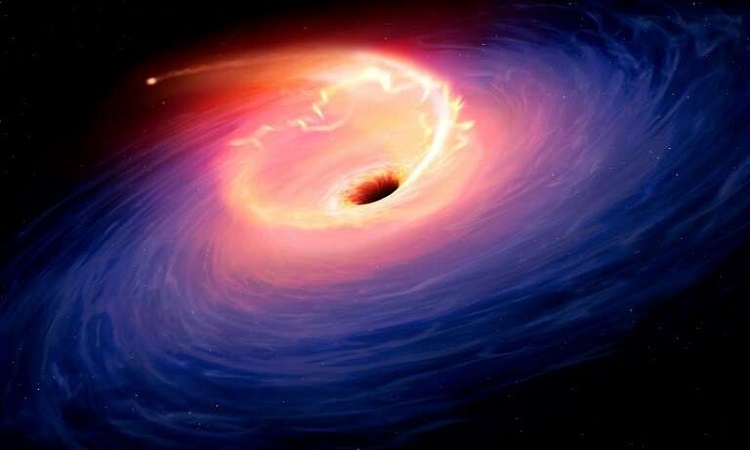We now have evidence that supermassive black holes are capable of creating and not only destroying. Moreover, they are able to do it over (very) long distances.
Black holes are generally associated with their destructive power, but they can also redistribute matter in the Universe, thus promoting the formation of new stars. These processes have already been observed in several galaxies. What we did not know was that supermassive black holes could also influence the formation of new stars in distant galaxies.
A team of researchers say they have recorded such a phenomenon at about 9 billion light-years. These observations were made using the Chandra X-ray observatory, as well as follow-up studies enabled by the Very Large Telescope (VLT) and the Large Binocular Telescope of the European Southern Observatory.
The “referrals” of black holes
The gravitational field of a black hole is so intense that no radiation can escape. This even concerns the photons that are the fastest particles in the Universe. This is why the material is generally absorbed as soon as it approaches it. Nevertheless, some particles still manage to escape.
Imagine a baby who ingests a little too much compote and vomits a little behind. With the baby, these “leftovers” usually end on the bib or on your face. In black holes, they are found on their side ejected from the two poles at speeds approaching that of light.
An incredibly large area of influence
In the journal Astronomy & Astrophysics, we learn that by absorbing matter, a cosmic ogre would have produced a jet of particles of high energy so large that a huge bubble of hot gas would have spread to four galaxies positioned at more than a million light-years.
Within these objects, the researchers then observed a very important rate of stellar formation. It was up to sixty times higher than that of the Milky Way. And for the researchers, it is indeed this black hole that is responsible.
We know that stars form from dense clouds of gas and dust that collapse under their own gravity. What the study proposes is that the enormous hot gas bubble emanating from the black hole would have compressed these clouds further, thus favoring the formation of young stars.
“It’s amazing to think that the black hole of a galaxy can have a say in what happens in other galaxies millions of billions of kilometers away,” concludes Roberto Gilli of the National Institute. of astrophysics of Bologna.




